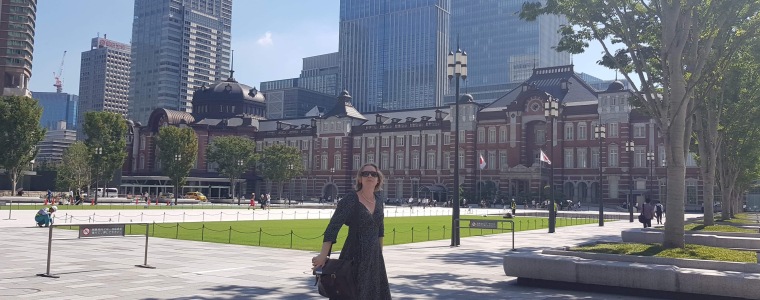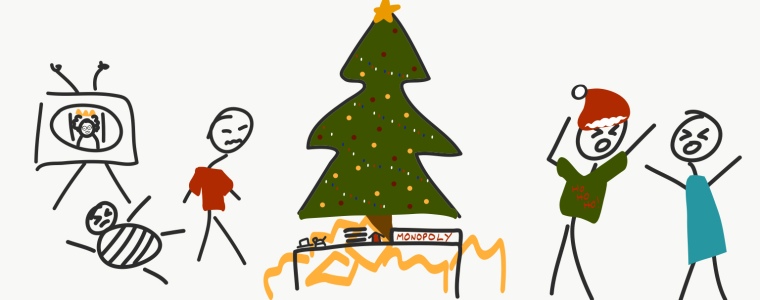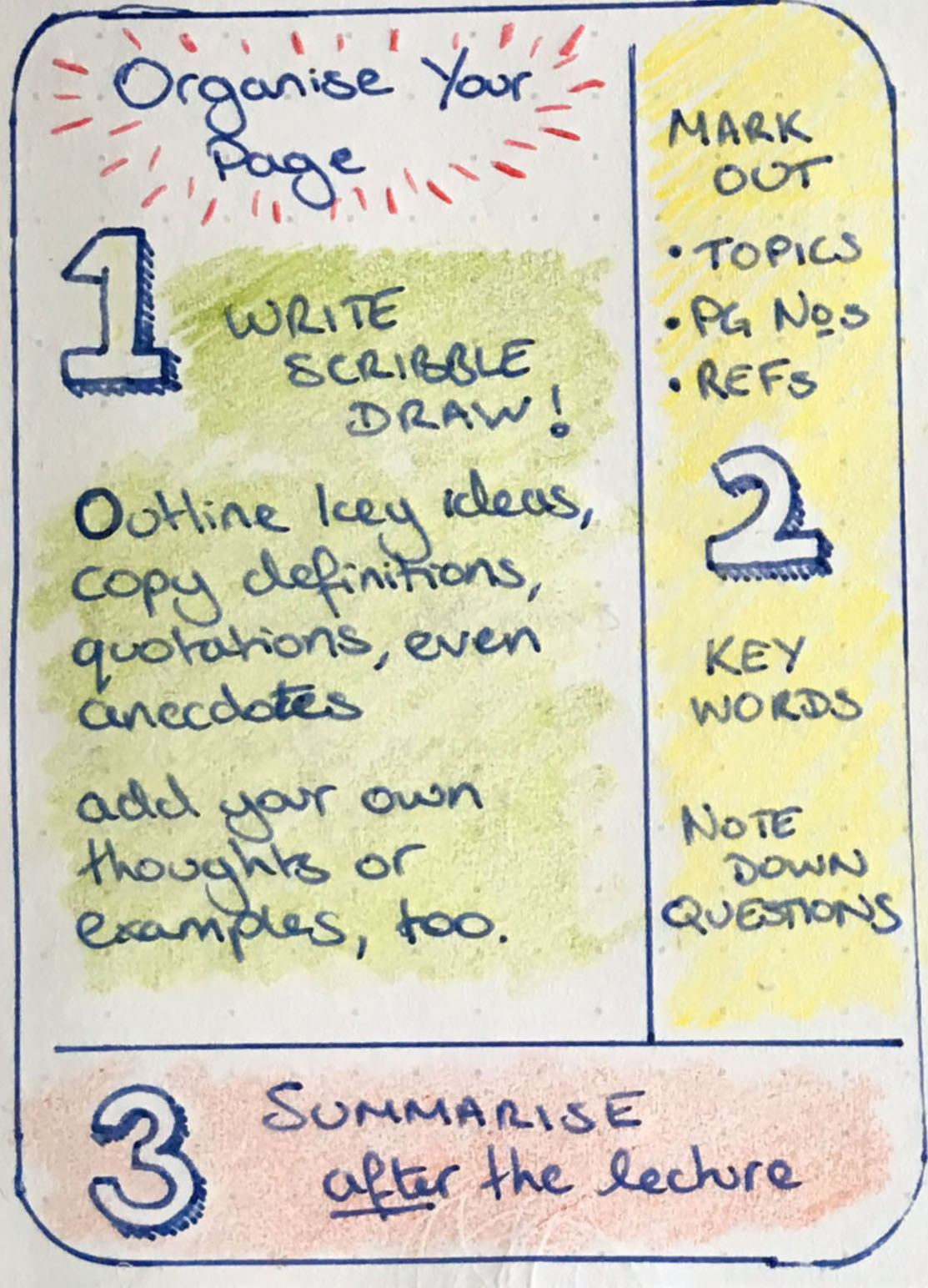This post is part one in a multi-part series explaining how the 2018 USS Pension strike is closely entwined with and an example of neoliberalisation. It is a long post, but assumes no prior knowledge of any of the concepts or context. If you want to look up the fabulous commentaries of colleagues who are much more familiar with this material and have been following this issue for a considerable amount of time, there are references and links at the bottom of the post.
In this post I will briefly cover neoliberalism, managerialism and some examples of this in the UK public sector. I will then go on to outline some of the ways in which colleagues have raised concerns that this is now ongoing in HE and how it affects this dispute.
1.1 What is neoliberalism
Neoliberalism is a contested term which emerged from debates over economic reform and is often reproduced by its contemporary detractors as a shorthand reference to any political ideology promoting increased marketisation (ie introducing the characteristics of market exchange) of previously non-marketised sectors. Boas & Gans-Morse (2009), writing in the field of development studies, outline that debates in academic literature often refer to different types of neoliberalism; i) economic reform, ii) a politico-economic model for rapid development, iii) ideology and iv) academic paradigm.
Neoliberal economic reform refers to the elimination of price controls, deregulation of capital markets and reduction of trade barriers as well as a broader tendency towards reducing the role of the state and facilitating privatization of state-owned enterprise. In principle this also endorses the reduction or removal of state subsidies, though in practice these are often converted into incentives (at least in the short term) to encourage private industry to take on seemingly unprofitable state functions. In the case of development, the objective of this ‘liberalisation’ of activity is to make a broader range of opportunities for investment available, therefore encouraging an influx of capital to the economy. A further objective lies in the consequent lower financial risks held by the state, making it easier for governments to borrow funds for other projects. Moving from a state-centred development model towards a neoliberal model often requires substantial restructuring of relations between state and other actors, such as labour unions, private enterprise etc. The development model also therefore involves substantial policy changes.
Neoliberal ideology, while often found in conjunction with neoliberal economics or social policy, refers to the emphasis on individual freedoms rather than collective responsibilities as inhabiting the core of social value. Consequently, proponents of this ideology advocate understanding of social and economic issues primarily as they apply to the abstract individual. This ideology is much more frequently found in individualistic cultures, and is popular in countries such as the United Kingdom, United States and Australia.
The neoliberal academic paradigm refers to assumptions about human nature and free will as they inform classical economics, primarily that individuals are rational and efficient maximisers of utility and profit. This particular simplification is sometimes described as a branch of positivist philosophy, as it represents the search for universal laws of human behaviour in markets based on an epistemology which accepts objective observation only. Individual academics hold a wide variety of different positions even within this paradigm, particularly on the importance of the rights of the abstract individual (which may require collective legislation to protect) versus the liberties of specific individuals to do what they please in society. However, the paradigm is widely critiqued as an oversimplification of human decision-making, ignoring the possibility of human development, and as a model which unrealistically prioritises masculinist and anomic assumptions about individuals’ existence outside of their relationships to others.
The popularity of neoliberalism (in all of the above meanings of the term) in public discourse can be seen to mark a particular historical turning point. As Boas and Gans-Morse (ibid) identify, the original proposals of the Freiburg school in Germany during the 1930s in fact were a moderate position as they advocated more regulatory intervention by the State than under laissez-faire liberalism in order to facilitate fair competition in the marketplace and enhance social welfare. However, following the successful economic period of the 1960s, substantial inflation linked to price hikes in oil combined with the growth of economies long challenged by post-war underdevelopment began to challenge dominant Western economies and undermine faith in Keynesian economic policies which foregrounded the role of the state. The resulting widespread advocacy of market fundamentalism in America (Reaganism) and the United Kingdom (Thatcherism) in the 1980s, labeled for critique by opponents as ‘neoliberal’ proposed less state intervention or control of national resources, industry and services.
1.2 What is New Public Management/New Managerialism?
In the United Kingdom as well as in a number of other countries in the world, we have been going through an historic shift in which legal regulation on individuals has increased, state responsibilities have been decreased and the delegation of state protected industries to private enterprise has been accelerated. In the UK this has coincided with substantial divestment from manufacturing and heavy industry, patchwork divestment from agricultural industry (mainly in relation to treaty agreements with EU and neighbouring producers over commodities such as milk and fish) and a shift towards an economy based on financial services, research and development, legal services and other knowledge work. It is no surprise that these changes coincide with increased competition in manufacturing (increasingly advanced) products overseas and an increase in global trade. Where industry remained with minimal or no state support, substantial arguments over how such activities ought to be run and managed were informed by the growing proponents of managerialism.
Enteman (1993) describes managerialism as a prevailing ideology which is characterised by the belief that the nature of an activity is immaterial to how it ought to be organised, which can be distilled to a set of universal techniques and expert processes. In this interdisciplinarity, managerialism is in alignment with the premises of neoliberalism, as the universal characteristics of management facilitate the justification of divesting state-operated activities to a market of private enterprise or to individuals. This legitimation, along with the frequent challenge that industries had to be ‘competitive’ in order to survive, fuelled the advocacy of managerial practices as politically neutral and reductionist arguments that omit the recognition of the social and political value of certain activities as well as economic value.
More recent scholarship on managerialism has highlighted specific principles which are clearly in common with neoliberalism described above; competition, deregulation, the pursuit of efficiency and the advocation of privatized industries. It is further argued that it is important to recognise the role of business and management schools in advocating and perpetuating this ideology, both among students and through influential publications such as the Harvard Business Review (Klikauer 2015). Individual corporate managers are also identified as beneficiaries of this thinking, as the financial and social value of such work is substantially inflated by this thinking. It is perhaps on this basis that managerialism is also said to describe the colonisation of organisation by layers of highly-paid ‘professional managers’. These communities label the principles of managerialism differently, yet whether ‘modernisation’, ‘market reform’, ‘shareholder value’ or another term is applied, all advocate the prioritisation of the same underlying principles.
Further to the long process of privatisation of a range of state-run or state-owned industries in the UK (from fuel extraction, power generation, sanitation and water supply, rail, airline, telephone and postal networks), very few statutory corporations in state ownership remain, of which the National Health Service (formed following the Beveridge report 1942) is one. In contradiction to neoliberal and managerialist principles, the full nationalisation of British Rail was reversed with respect to the track and signalling infrastructure after the Hatfield Rail Crash in 2000 which exposed flouting of health and safety procedures by the privatised Railtrack and their contractors. This was further evidence that the notion of universal managerial principles in which a certain level of risk was acceptable were not suitable in the management of public infrastructure following the Ladbroke Grove rail crash in 1999 where preventative safety measures had been ruled out in cost-benefit analysis.
Despite contradictory examples challenging the authority of managerialism, political pressures to reduce the cost of state-run services have resulted in the introduction of ‘professional management’ and it’s techniques in areas such as healthcare under the label ‘New Public Management’ (NPM). Under NPM, different public services are encouraged to behave as competitors in a market for public funds, where the introduction of private organisations may also challenge for similar objectives. Decision making is, in addition, decentralised and sub-units of the organisation (such as local clinics) have more scope to decide how to allocate their resources. The use of contractors is encouraged along with a focus on cost-minimisation and target-based performance monitoring. These features of NPM are advocated as providing particular benefits, such as cost reduction, service differentiation (ie services provided are more specific and relevant to the needs of the locality) and choice. The use of NPM in the National Health Service, along with several restructurings and attempts to apply technology to ‘modernise’ and improve efficiency in the service have been widely criticised as unproductive, counter to the demands of public health provision, and short-sighted. A more moderate evaluation of the techniques on their own terms highlights that the proposed benefits do not always align with public demands for equitable and universal access to services (Simonet 2015).
Unlike the National Health Service, provision of education in the UK does not rest within a State-owned corporation but rather in a complex relationship between multiple institutions in receipt of state funding. A range of religious institutions, charitable and fee-paying schools provided education services in the UK until the end of the 19th century until the Education act of 1918 sponsored compulsory provision of primary and secondary education. Nonetheless, in line with managerialist ideology, a number of the same processes applied following privatisation in areas such as rail and mail or in NPM in the NHS can be seen in recent transformations in UK education.
While the UK school system is complex to those unfamiliar with it, a simplified picture begins with the identification of the majority of institutions historically as either locally-run and publicly owned schools subject to national governance regarding curriculum and regulation by Ofstead, or a minority of independent fee-paying establishments who are mainly exempt. However, reforms beginning in the late 1990s introduced a range of different school operating models in which capital assets might be owned or operated by private organisations or charitable trusts, staff may be employed by the local government authority, school governing board or a private organisation such as a multi-academy trust.
An important feature of these new developments is the way in which they characterise school buildings as financial assets in which private corporations may invest (privitisation), in the segregation of school governance from local authority oversight in favour of individual negotiation directly with the government Department for Education (deregulation) and in the promotion of differentiation in educational provision measured through Ofstead rankings, KPIs and other published outcomes (competition). Despite these changes, there is no evidence as yet that the new structure (academies) produce overall better educational outcomes (Gorard 2009). However, the differentiation in school provision does lead to substantial disadvantage for those unable to access ‘better’ educational services and impedes the ability for those services to improve without accepting a move to private investment and control. Although the introduction of privatisation has been widespread, these organisations maintain a not-for-profit orientation. Nonetheless, they impose a profit-driven, managerialist and competitive logic in which the state takes a less direct role (Ball 2009; 2012) and in which corporate entrepreneurialism is normalised (Woods et al 2007).
Examples such as rail, health and education show that considerable evidence to challenge the premises of universally appropriate methods and techniques of management, the idea that privately-run services in competition produce better outcomes, that attempts to model public services as commodity markets are effective or that the public can identify with a consumer choice model for such services.
1.3 What does this have to do with the 2018 UCU Pension strike?
In Higher education, as with other areas of education, debates have increasingly focused on the responsibility of universities as trainers of the next generation of value-producing individuals. This has coincided, since the introduction of university tuition fees in 1998 (and in 1999 loans in place of maintenance grants), with language which encourages students to view themselves as consumers making an ‘investment’ in their future career potential. The introduction of tuition fees, while originally advocated in order to address a government financial deficit in HE and to promote increased participation in education at university level, have been a key stage in the promotion of privatization in HE. Although loans for fees and maintenance are issued based on the government-backed Student Loan company, a portion of debts accrued between 1990-1998 have been sold on to private debt collection agencies. Student accommodation firms are also frequently the beneficiaries of the readily available maintenance loans, with multiple universities investing in construction of new accommodation alone or in private partnerships (see Hale 2018 for more on this).
While university funding for home students’ tuition used to be routinely capped at a fixed number of places, the introduction of student fees and later removal of the cap on places (in 2015) encouraged universities to think of themselves as competing ‘providers’ of an educational service to home students in much the same way as they marketed themselves abroad. By removing the regulation on numbers and attaching funding to students, the recruitment of students became a competition for resources and by increasing the annual intake universities benefited from economies of scale, particularly in courses with low costs (such as the humanities). To address the need for additional teaching and administrative capacity, facing uncertain recruitment figures, managers of university departments looked to act as they previously did to cover staff on research leave – employ more staff on short-term contracts, such as hourly paid lecturers and termtime-only administrators. Although these staff were eligible for some of the benefits of other staff, such as the pension scheme or reduced cost childcare, most were paid only a fraction of those on full-time contracts and as such could not afford to pay for such benefits. The introduction of performance ranking measures such as TEF also indicated a likelihood that student numbers would regularly fluctuate in future based on modelling students as consumers of a preferred service.
It is in this context that the administrative organisation representing universities contributing to the USS Pension scheme (Universities UK) began discussions regarding reducing the financial risk of the scheme bourne by university employers. It is important to note that there are two significant pension schemes which cover most UK universities; the USS scheme (which applies to pre-1992 institutions) and the TPS scheme (which applies to post-1992 universities and other schools and colleges). The USS pension was recently subject to substantial changes following disputes over TPS, and in which the negotiated outcome for TPS was broadly matched by USS. The introduction of divergence between the two schemes can (and has) been identified as a basis of competition between the two communities of universities. Beyond the politics of collective negotiation, a wealth of information has also emerged in the early stages of this dispute to indicate that the valuation of the total assets of USS against its potential liabilities is empirically unsound (see Otsuka’s many 2018 commentaries for a blow-by-blow account of the valuation), and the risk is not as substantial as it appeared.
It is unclear why UUK would continue to attempt to push for the changes to the scheme rather than take time to review their valuation method. However, collections of reports, presentations and other relevant documents by Felicity Callard (2018 twitter) has indicated a narrative focused on entrepreneurialism and choice, and further reports on the financial benefits received by those administering UUK (Havergal 2016) and top positions in Universities (Simons 2018) has lent credence to the idea that the proposed changes are driven by managerialist ideology.
More on this to come in Part II…..!
Recommended Reading/ Resources
Academic Articles
Joel D Aberbach and Tom Christensen (2007) Citizens and Consumers, Public Management Review, 7:2, 225-246, DOI: 10.1080/14719030500091319
Louise Archer (2008) “The new neoliberal subjects? Young/er academics’ constructions of professional identity”, Journal of Education Policy, 23:3, 265-285, DOI: 10.1080/02680930701754047
Stephen J. Ball (2009) Privatising education, privatising education policy, privatising educational research: network governance and the ‘competition state’, Journal of Education Policy, 24:1, 83-99,DOI: 10.1080/02680930802419474
Stephen J. Ball (2012) The reluctant state and the beginning of the end of state education, Journal of Educational Administration and History, 44:2, 89-103, DOI: 10.1080/00220620.2012.658764
Taylor C. Boas and Jordan Gans-Morse. (2009). Neoliberalism: From new liberal philosophy to anti-liberal slogan. Studies in Comparative International Development, 44(2), 137–161.
Roger Burrows. (2012). Living with the h-index? Metric assemblages in the contemporary Academy. The Sociological Review, 6(2), 355–372.
Raewyn Connell, Barbara Fawcett and Gabrielle Meagher (2009) “Neoliberalism, New Public Management and the human service professions: Introduction to the Special Issue” Journal of Sociology Vol 45, Issue 4, pp. 331 – 338 https://doi.org/10.1177/1440783309346472
Bronwyn Davies and Peter Bansel (2010). Governmentality and Academic Work:Shaping the hearts and minds of academic workers. Journal of Curriculum Theorizing 26(3) pp5-20
Rosemary Deem, Sam Hillyard and Mike Reed (2007) Knowledge, Higher Education, and the New Managerialism: The Changing Management of UK Universities Oxford University Press https://books.google.co.uk/books?id=45cXWj4M0acC&printsec=frontcover
Willard F Enteman (2007) “Managerialism and the Transformation of the Academy” Philosophy of Management 6(1):5-16 https://link.springer.com/article/10.5840/pom2007612
Heather Fraser and Nik Taylor (2016) Neoliberalization, Universities and the Public Intellectual Palgrave Macmillan London
Henry Giroux (2002) Neoliberalism, Corporate Culture, and the Promise of Higher Education: The University as a Democratic Public Sphere. Harvard Educational Review, Vol. 72, No. 4, pp. 425-464. https://doi.org/10.17763/haer.72.4.0515nr62324n71p1
Leslie D. Gonzales, E.Martinez and C. Ordu (2014). Exploring faculty experiences in a striving university through the lens of academic capitalism. Studies in Higher Education, 39(7), 1097–1115.
Leslie D. Gonzales and Anne-Marie Núñez. (2014). The Ranking Regime and the Production of Knowledge: Implications for Academia. Education Policy Analysis Archives, 22(31). http://dx.doi.org/10.14507/epaa.v22n31.2014
Stephen Gorard (2009) What are Academies the answer to?, Journal of Education Policy, 24:1, 101-113, DOI: 10.1080/02680930802660903
Thomas Klikauer (2013) “What is Managerialism?” Critical Sociology 41 (7-8) pp1103-1119 https://doi.org/10.1177/0896920513501351
Chris Lorenz, “If You’re So Smart, Why Are You under Surveillance? Universities, Neoliberalism, and New Public Management,” Critical Inquiry 38, no. 3 (Spring 2012): 599-629. https://doi.org/10.1086/664553
Mark Olssen and Michael A. Peters (2007) Neoliberalism, higher education and the knowledge economy: from the free market to knowledge capitalism, Journal of Education Policy, 20:3, 313-345, DOI: 10.1080/02680930500108718
Hugo Radice (2013) “How We Got Here: UK Higher Education under Neoliberalism” ACME: An International Journal for Critical Geographies 12(2) http://142.207.145.31/index.php/acme/article/view/969 [NB A radical publication and not all work is blind-reviewed]
Jeff Rose and Dan Dustin (2009). The neoliberal assault on the public university: The case of recreation, park, and leisure research. Leisure Sciences, 31(4), 397–402.
Daniel Simonet (2015) “The New Public Management Theory in the British Health Care System: A Critical Review” Administration & Society 47(7) 802-826 https://doi.org/10.1177/0095399713485001
Cris Shore (2010). Beyond the multiversity: Neoliberalism and the rise of the schizophrenic university. Social Anthropology, 18(1), 15–29
Sandra Smeltzer and Alison Hearn (2014) Student Rights in an Age of Austerity? ‘Security’, Freedom of Expression and the Neoliberal University, Social Movement Studies, 14:3, 352-358, DOI: 10.1080/14742837.2014.945077
Philip A. Woods, Glenys J. Woods & Helen Gunter (2007) Academy schools and entrepreneurialism in education, Journal of Education Policy, 22:2, 237-259, DOI: 10.1080/02680930601158984
News, Magazine articles and social media publications
Anonymous (Feb 19th 2018) “Why I don’t want to go on strike”, Medium, Available Online: https://medium.com/@ukacademic/why-i-dont-want-to-go-on-strike-e4a18bed6438
Jana Bacevic (March 14th 2018) Life or Business as Usual? The lessons of the USS strike (personal blog) Available online at: https://janabacevic.net/2018/03/14/life-or-business-as-usual-lessons-of-the-uss-strike/
Jennie Bristow (Mar 5th 2018) “This strike reminds us what universities are for” Spiked! http://www.spiked-online.com/newsite/article/this-strike-reminds-us-what-universities-are-for/21184?utm_content=buffer3b3c4&utm_medium=social&utm_source=twitter.com&utm_campaign=buffer#.WqFABijFJaR
Gurminder Bhambra (Feb 23rd 2018) In Defence of the Public University: The USS Strike in Context Discover Society https://discoversociety.org/2018/02/23/in-defence-of-the-public-university-the-uss-strike-in-context/
Felicity Callard (No title: collection of relevant documents and summary analysis) Twitter. Available at: https://twitter.com/felicitycallard/status/973136190319792129 and https://twitter.com/felicitycallard/status/973157185088868353
Thomas Hale (March 6th 2018) “Universities and the allure of capital markets” Financial Times Alphaville https://ftalphaville.ft.com/2018/03/06/2199103/universities-and-the-allure-of-capital-markets/
Thomas Hale (January 26th 2018) “The many problems with a market for Higher Education” Financial Times Alphaville https://ftalphaville.ft.com/2018/01/26/2198133/the-many-problems-with-a-market-for-higher-education/ [note the ‘problems’ identified here are not about ideology but about the practicalities of HE operating as a market and defining students as consumers]
Thomas Hale (Feb 7th 2018) “The financing of Student Accomodation” Financial Times Alphaville https://ftalphaville.ft.com/2018/02/05/1517828056000000/The-financing-of-student-accommodation/
William G Pooley (March 6th 2018) Who are UUK anyway? Personal Blog https://williamgpooley.wordpress.com/2018/03/06/who-are-uuk-anyway/
Michael Otsuka (Feb 12th 2018) “Oxford’s and Cambridge’s role in the demise of USS” Medium https://medium.com/@mikeotsuka/oxfords-and-cambridge-s-role-in-the-demise-of-uss-a3034b62c033
Michael Otsuka (Jan 7th 2018) “No alternative methodology was proposed” Medium
https://medium.com/@mikeotsuka/no-alternative-methodology-was-proposed-f96eee1740b7
Ned Simons (Feb 28th 2018) “Vice-Chancellors Accused Of Pocketing An ‘Eye-Watering’ 227% Increase In Financial Benefits Since 2010” Huffington Post http://www.huffingtonpost.co.uk/entry/vice-chancellors-have-pocketed-an-eye-watering-227-increase-in-financial-benefits-since-2010_uk_5a96befce4b0e6a523039e82?ncid=tweetlnkukhpmg00000001
Alexander Styre (2014) Neoliberalism, the Free Market, and the Decline of Managerial Capitalism http://www.europeanfinancialreview.com/?p=82
UCU (Mar 6th 2018) Edinburgh University under fire over plans to try and break pensions strike with out of date recorded lectures https://www.ucu.org.uk/article/9386/Edinburgh-University-under-fire-over-plans-to-try-and-break-pensions-strike-with-out-of-date-recorded-lectures#.Wp5-DX9TSNw.twitter
Sophie Inge (March 6th 2018) “UK Universities rely on casual staff ‘for up to half of teaching'” Times Higher Education https://www.timeshighereducation.com/news/uk-universities-rely-casual-staff-half-teaching
Chris Havergal (July 28th 2016) “Bonuses up at USS as pension fund deficit grows by £1.8 billion” Times Higher Education https://www.timeshighereducation.com/news/bonuses-uss-pension-fund-deficit-grows-ps18-billion
Alice Evans (15th Feb 2018) It’s scary and unfair: why I’m striking over university pensions The Guardian Higher Education Network https://www.theguardian.com/higher-education-network/2018/feb/15/its-scary-and-unfair-why-im-striking-over-university-pensions














